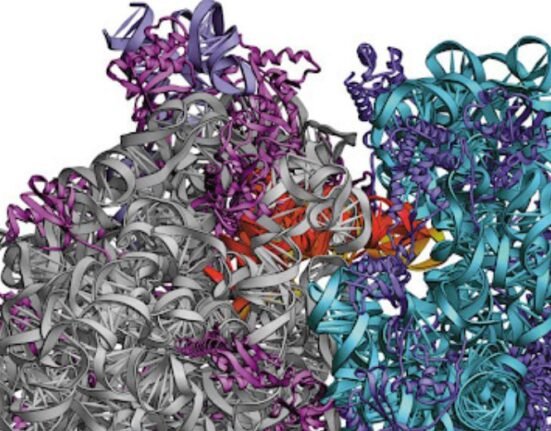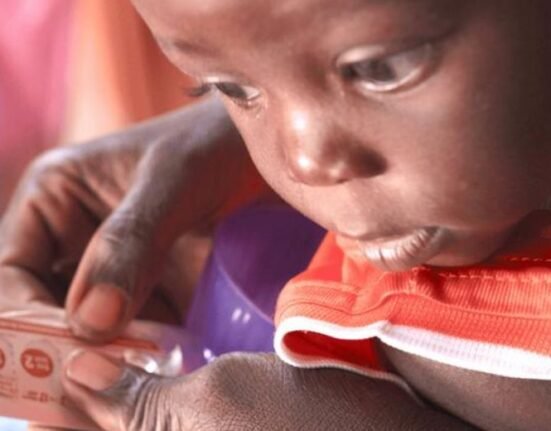HQ Team
July 10, 2023: US researchers have genetically edited mosquitoes to kill females of the species responsible for the spread of malaria.
Researchers at the University of California, San Diego led by Prof Omar Akbari’s laboratory have engineered a new way to genetically suppress populations of anopheles gambiae — the mosquitoes that spread malaria in Africa.
They created a system called Ifegenia, “inherited female elimination by genetically encoded nucleases to interrupt alleles.”
The technique leverages the CRISPR technology to disrupt a gene known as femaleless (fle) that controls sexual development in anopheles gambiae mosquitoes.
Ifegenia works by genetically encoding the two main elements of CRISPR technology within African mosquitoes.
These include a Cas9 nuclease, the molecular “scissors” that make the cuts and a guide RNA. Both direct the system to the target through a technique developed in these mosquitoes in Akbari’s lab.
‘It was extraordinary’
They genetically modified two mosquito families to separately express Cas9 and the fle-targeting guide RNA.
“We crossed them together and in the offspring, it killed all the female mosquitoes,” said first-author Andrea Smidler, a postdoctoral scholar at the UC San Diego School of Biological Sciences. “It was extraordinary.”
Gene editing is a group of technologies that give scientists the ability to change an organism’s DNA.
These technologies allow genetic material to be added, removed, or altered at particular locations in the genome. A well-known approach is called CRISPR-Cas9.
The CRISPR-Cas9 system has generated a lot of excitement in the scientific community because it is faster, cheaper, more accurate, and more efficient than other genome editing methods.
Arrays get bacteria to ‘remember’
CRISPR-Cas9 was adapted from a naturally occurring genome editing system that bacteria use as an immune defense.
When infected with viruses, bacteria capture small pieces of the viruses’ DNA and insert them into their own DNA in a particular pattern to create segments known as CRISPR arrays.
The CRISPR arrays allow the bacteria to “remember” the viruses. If the viruses attack again, the bacteria produce RNA segments from the CRISPR arrays that recognize and attach to specific regions of the viruses’ DNA.
The bacteria then use Cas9 or a similar enzyme to cut the DNA apart, which disables the virus.
The. researchers adapted this immune defense system to edit DNA. They create a small piece of RNA with a short “guide” sequence that binds to a specific target sequence in a cell’s DNA, much like the RNA segments bacteria produce from the CRISPR array.
This guide RNA also attaches to the Cas9 enzyme. When introduced into cells, the guide RNA recognizes the intended DNA sequence, and the Cas9 enzyme cuts the DNA at the targeted location, mirroring the process in bacteria.
Use in humans
Although Cas9 is the enzyme that is used most often, other enzymes, for example Cpf1, can also be used.
Once the DNA is cut, researchers use the cell’s own DNA repair machinery to add or delete pieces of genetic material, or to make changes to the DNA by replacing an existing segment with a customized DNA sequence.
Presently, genome editing is used in cells and animal models in research labs to understand diseases. Scientists are still working to determine whether this approach is safe and effective for use in people.
It is being explored in research and clinical trials for a wide variety of diseases, including single-gene disorders such as cystic fibrosis, hemophilia, and sickle cell disease.
It also holds promise for the treatment and prevention of more complex diseases, such as cancer, heart disease, mental illness, and human immunodeficiency virus infection.
The researchers stated in the study that anopheles gambiae male mosquitoes inherited Ifegenia but the genetic edit doesn’t impact their reproduction.
They remain reproductively fit to mate and spread Ifegenia, they said.
Population suppression
A parasite spread eventually is halted since females are removed and the population reaches a reproductive dead end.
The new system circumvents certain genetic resistance roadblocks and control issues faced by other systems such as gene drives since the Cas9 and guide RNA components are kept separate until the population is ready to be suppressed.
“We show that Ifegenia males remain reproductively viable, and can load both fle mutations and CRISPR machinery to induce fle mutations in subsequent generations, resulting in sustained population suppression,” the authors noted in their study.
“Through modeling, we demonstrate that iterative releases of non-biting Ifegenia males can act as an effective, confinable, controllable, and safe population suppression and elimination system.”
Insecticides are still heavily used across the globe, primarily in an effort to stop malaria, which increases health and ecological risks in areas in Africa and Asia.
Eliminate malaria
“This technology has the potential to be safer, controllable, and scalable solution the world urgently needs to eliminate malaria once and for all,” said Prof Akbari, a professor in the Department of Cell and Developmental Biology.
“Now we need to transition our efforts to seek social acceptance, regulatory use authorizations, and funding opportunities to put this system to its ultimate test of suppressing wild malaria-transmitting mosquito populations.
“We are on the cusp of making a major impact in the world and won’t stop until that’s achieved.”
The technology behind Ifegenia could be adapted to other species that spread deadly diseases, such as mosquitoes known to transmit dengue (break-bone fever), chikungunya, and yellow fever viruses.








